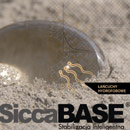Renovating your bathroom offers a perfect opportunity to rethink your choices and opt for solutions that support a sustainable future. With growing awareness of environmental issues, many homeowners are seeking ways to update their spaces while being mindful of their ecological footprint. By selecting materials and fixtures that prioritize energy efficiency, you can contribute to a healthier planet without sacrificing style or comfort.
Making eco-friendly decisions in your bathroom renovation can start with simple yet impactful changes. From choosing low-flow faucets to incorporating sustainable materials like bamboo or recycled glass, every choice matters. Not only do these options reduce water and energy consumption, but they also enhance the overall aesthetic of your bathroom, creating a space that feels both modern and responsible.
As you embark on your renovation, consider the long-term benefits of eco-friendly upgrades. Investing in energy-efficient appliances and smart technologies can lead to significant savings over time, making your bathroom not just a sanctuary of relaxation, but also a model of sustainability. By adopting these practices, you contribute to a greener future, one bathroom at a time.
Selecting Sustainable Materials for Fixtures and Surfaces
Choosing sustainable materials for your bathroom fixtures and surfaces plays a significant role in promoting conservation and reducing environmental impact. When looking for options, consider materials with a low ecological footprint, such as bamboo, recycled metal, or reclaimed wood. These alternatives not only contribute to sustainability but also provide unique aesthetic qualities.
Furthermore, consider ceramic tiles made from recycled content. They are durable and energy-efficient, aligning perfectly with eco-friendly practices. Opting for low-VOC paints and finishes will improve indoor air quality while ensuring that the space remains free from hazardous chemicals.
When selecting fixtures, look for water-saving technologies, such as low-flow faucets and showerheads. These not only conserve water but also promote the use of green products that align with a sustainable lifestyle. This conscious approach can lead to a bathroom that is both stylish and environmentally responsible.
Incorporating Water-Saving Technologies in Your Bathroom
Water conservation is a key aspect of sustainable bathroom renovations. Implementing water-saving technologies not only reduces water usage but also enhances energy efficiency in your home.
Installing low-flow faucets and showerheads can significantly decrease water flow without sacrificing performance. These fixtures are designed to provide a satisfying experience while minimizing consumption, aligning with your goals for sustainability.
Toilets account for a large portion of household water use. Consider dual-flush or high-efficiency models that utilize less water per flush. These innovations contribute to conservation efforts by allowing users to choose the appropriate flush based on waste type.
Additionally, smart water management systems can be integrated into your bathroom design. These systems monitor water usage patterns and can detect leaks, alerting homeowners to potential issues before they escalate. This proactive approach not only aids in conservation but also supports long-term sustainability.
By incorporating these water-saving technologies, you create a bathroom that reflects responsible choices, balancing modern convenience with environmental care.
Choosing Eco-Conscious Paints and Finishes
Incorporating eco-friendly paints and finishes into your bathroom renovation plays a significant role in promoting sustainability and energy efficiency. These products not only reduce the environmental impact but also contribute to air quality improvement within your home.
- Low-VOC and Zero-VOC Paints: Volatile Organic Compounds (VOCs) are harmful emissions often found in traditional paints. Opt for low or zero-VOC options to enhance indoor air quality and lessen environmental harm.
- Natural and Organic Finishes: Consider paints made from natural ingredients like clay, chalk, or plant-based oils. These finishes provide a unique aesthetic while being gentler on the planet.
- Recycled and Upcycled Options: Seek out products that utilize recycled materials. Collections that source pigments from recycled substances reduce waste and support conservation efforts.
- Durable Finishes: Invest in long-lasting paints that require fewer coats and touch-ups over time. A durable finish not only saves resources but also ensures longer intervals between renovations.
By selecting paints and finishes that prioritize resource conservation, homeowners can significantly impact local ecosystems while creating a beautiful, healthy bathroom environment. For additional ideas on eco-friendly renovations, visit https://bathroom-trends.com/.
Implementing Energy-Efficient Lighting Solutions
Choosing the right lighting for your bathroom renovation can significantly enhance energy efficiency while contributing to conservation efforts. By opting for LED fixtures, you can reduce both electricity consumption and costs, as these bulbs last much longer than traditional options.
Incorporating smart lighting systems also plays a vital role in creating an eco-friendly bathroom. These systems allow you to control lighting based on usage patterns, ensuring that lights are only on when needed. Such green products not only support energy conservation but also offer convenience and adaptability to your lifestyle.
Consider using dimmers and timers as they enable adjustments to light levels, further promoting an energy-conscious environment. Selecting fixtures that are designed for optimal light distribution will also minimize energy waste while enhancing your bathroom’s ambiance. By prioritizing energy-efficient lighting, you create a bathroom that is both stylish and sustainably minded.













